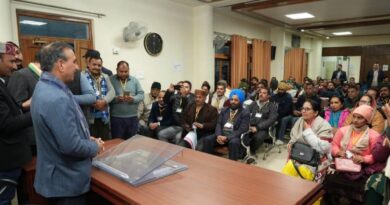Unseasonal Rains and Temperature Drop Threaten Stone Fruit Crops in Bali Chowki
Farmers and orchardists in Bali Chowki are facing an unexpected challenge this season as unseasonal rainfall and a sudden drop in temperature in March have disrupted the flowering of stone fruits such as plums, apricots, and pears. This unusual weather pattern has raised concerns about potential damage to the fruit crops, leaving the agricultural community anxious about the upcoming harvest.
The Impact of Weather on Fruit Flowering
The flowering stage is a critical period for fruit crops, and the recent weather fluctuations have severely affected the process. According to horticulture experts, sunny weather during flowering is essential for optimal fruit setting. Bees, which play a crucial role in pollination, are less active during bad weather, leading to poor pollination and, consequently, lower fruit yield.
The ideal temperature for flowering and fruit setting is between 22 to 25 degrees Celsius. However, the unseasonal rains and cooler temperatures have disrupted this balance, putting the stone fruit crops at risk.
Farmers Voice Their Concerns
Local orchardists, including Dila Ram Mehta, Roshan Mehta, Sohan Lal, Teja Singh, Mahendra Singh, Utam Ram Mahant, Moti Mahant, Tek Singh Mahant, Amar Singh Mahant, Ravindra Singh Mahant, Nidhi Singh Daroga, Purn Chand Thakur, and Prem Singh, have expressed their worries. They fear that if the weather does not improve soon, the production of plums, apricots, and pears could suffer significant damage.
“The unseasonal rains and cold weather have come at the worst possible time,” said one orchardist. “If this continues, we could see a sharp decline in fruit production this year.”
Potential Consequences for Farmers
Stone fruits are a major source of income for farmers in the region, and a decline in production could have serious economic repercussions. The uncertainty surrounding the weather has left many farmers anxious about their livelihoods.
What Can Be Done?
While farmers have little control over the weather, experts suggest that they can take some measures to mitigate the damage. These include:
- Monitoring weather forecasts closely to plan farming activities.
- Using protective covers or nets to shield crops from excessive rain.
- Ensuring proper drainage in orchards to prevent waterlogging.
Looking Ahead
The situation in Bali Chowki highlights the vulnerability of agriculture to climate variability. As farmers brace for potential losses, the need for better weather prediction systems and adaptive farming practices becomes increasingly evident.
For now, the farming community remains hopeful that the weather will stabilize, allowing them to salvage the season’s harvest. However, the incident serves as a reminder of the challenges posed by unpredictable weather patterns and the importance of resilience in agriculture.



